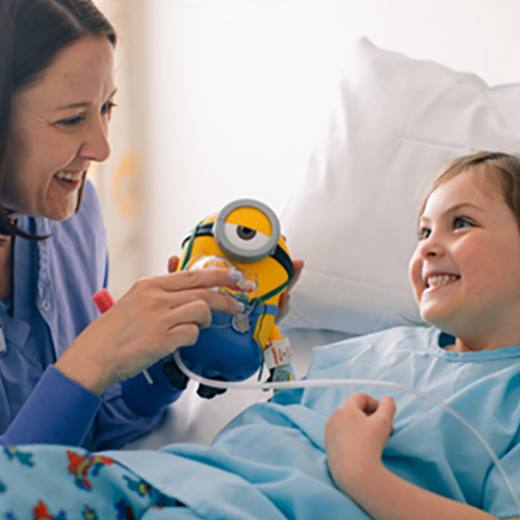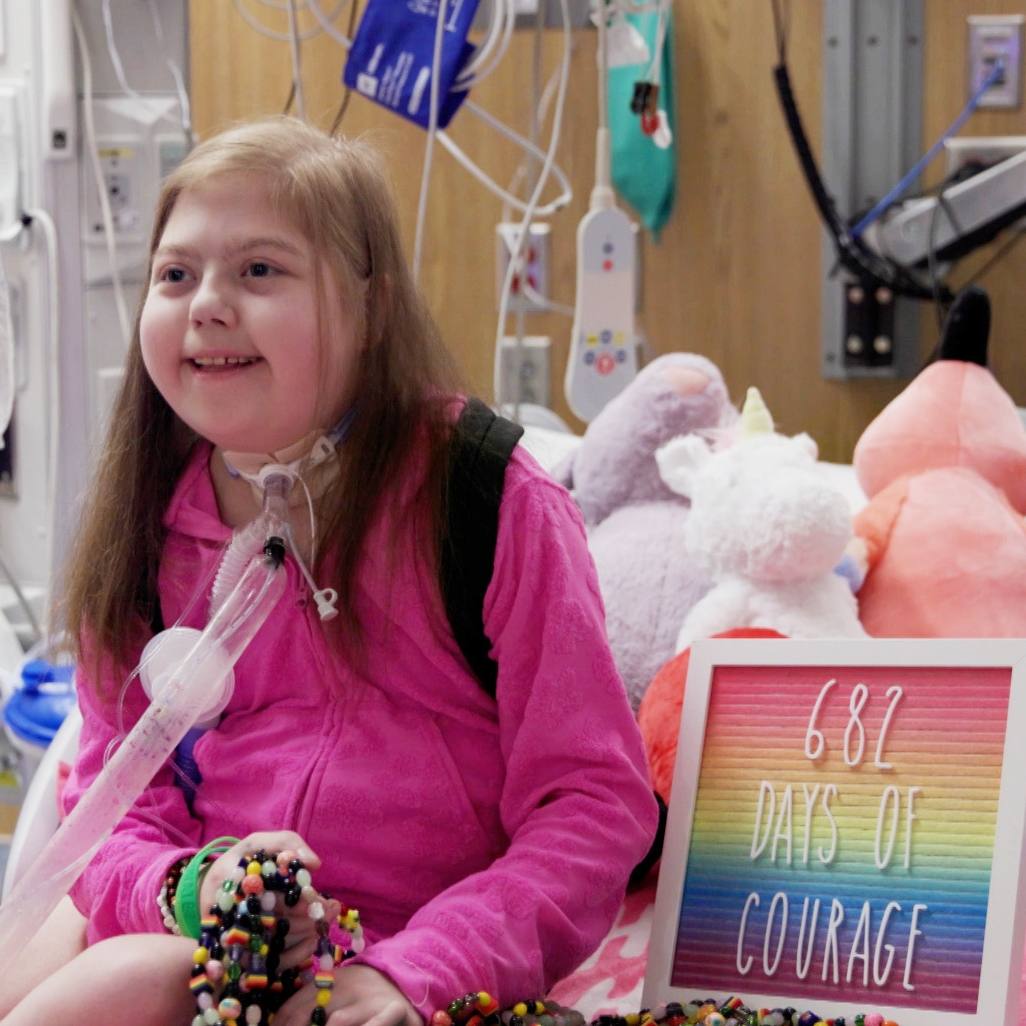-
Mayo Clinic Children's
Sharing Mayo Clinic: Scarlett is running and smiling after surgery to correct pectus excavatum

When Sara Hutchins noticed an indent in her daughter Scarlett’s chest, she immediately recognized the cause: pectus excavatum, a condition that causes the breast bone to sink into the chest. A family member had the same condition, Sara says. “He’d had surgery to correct it but was never satisfied with his results.”
Sara wanted to ensure that if Scarlett had surgery, she’d like what she saw in the mirror afterward. “I did a lot of research,” Sara says. That research led her to Mayo Clinic, where a team of surgeons typically treats more than 1,000 adults and children with pectus excavatum each year.
“We have extensive experience with minimally invasive pectus excavatum repair, which we began offering in the 1990s,” Dean Potter Jr., M.D., a pediatric surgeon, says. Mayo surgeons have received training on that repair, called the Nuss procedure, from the physician who developed it. “We have a special relationship with Dr. Nuss as he is a Mayo surgical fellowship graduate,” Dr. Potter says.
In January 2017, Sara and Scarlett traveled from their home in South Carolina to Mayo Clinic Children’s Center in Rochester, Minn. to meet with Dr. Potter. He examined Scarlett, then 9, and learned that as the depression in her chest had deepened over the years, it was becoming harder for her to breathe when she ran. That’s a common symptom in patients with severe pectus excavatum, as the condition can compress the heart and lungs.
Dr. Potter determined Scarlett was a good candidate for the Nuss procedure. But he recommended she wait until she was a bit older — ideally between 12 and 14, after much of her growth had occurred — to have surgery. That would ensure that the curved metal bar inserted into the chest to raise the breastbone would not need to be upsized if she had a major growth spurt.
The visit confirmed for Sara that when the time came for Scarlett to have surgery, Mayo was the right place for the procedure.
“Our experience was stellar from the second we checked in,” Sara says. “I was really stunned by the level of care available.”
For the next three years, Dr. Potter monitored Scarlett’s condition remotely through X-rays and other information submitted to Mayo’s patient portal. “Any questions we’d have we’d submit to the portal and hear back within hours,” Sara says.
Technology like the patient portal and video appointments have made it easier for people anywhere to access Mayo Clinic.
“If a family needs advice, education, or even a second opinion from a children’s surgery expert, Mayo Clinic is closer than they think,” Dr. Potter says.
In 2020, Dr. Potter determined that Scarlett was ready for surgery. Sara and Scarlett returned to Mayo Clinic Children’s Center in December and learned more about the procedure and recovery — including a new technique, nerve cryoablation, being used to manage patients’ post-operative pain. Scarlett would be the fifth patient at Mayo Clinic to benefit from the treatment.
“Since starting cryoablation, we have started to see patients comfortable enough to leave the hospital the day after surgery,” Dr. Potter says. “Also, the amount of narcotic use has dramatically decreased. Some patients have not used any narcotics.”
That includes Scarlett, who took nothing stronger than ibuprofen and acetaminophen after surgery.
“She was up walking the same day,” Sara says. “It was incredible.”
Also incredible? The results after the procedure.
“The day after surgery, Scarlett was ready to look at her chest,” Sara says. “When she looked in the mirror, she got a big smile on her face. We saw huge results.”
Nearly six months after surgery, Scarlett is easing back into the activities she loves, including gymnastics, running, and pole vaulting. Dr. Potter continues to monitor he condition through video appointments, saving the family additional trips to Minnesota.
“While traveling for surgery is inconvenient, making one trip to have access to centers with excellent outcomes is a dramatic advantage to kids and their families,” Dr. Potter says.
The Hutchinses agree. They say they’d gladly travel again to receive the level of care they did at Mayo Clinic.
“Before surgery, all the different doctors came in and talked to me and explained what they were going to do,” Scarlett says. “They even let me take my stuffed animal into surgery with me and put a wrist band on it.”
That helped ease her nerves in the operating room, as did the kindness of a nurse who held her hand until she was under anesthesia.
It’s that kind of care that assured Sara she’d brought her daughter to the right place.
“I had a lot of fear as a parent, but Mayo took it all away,” Sara says. “When Scarlett was wheeled back to surgery, I knew she was in the best hands possible. I’d picked the best.”
Related Articles







